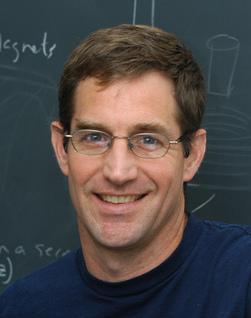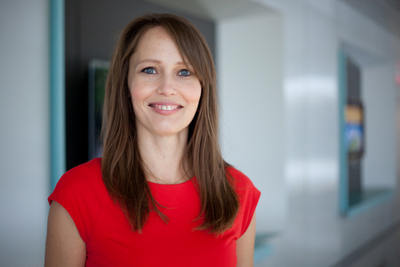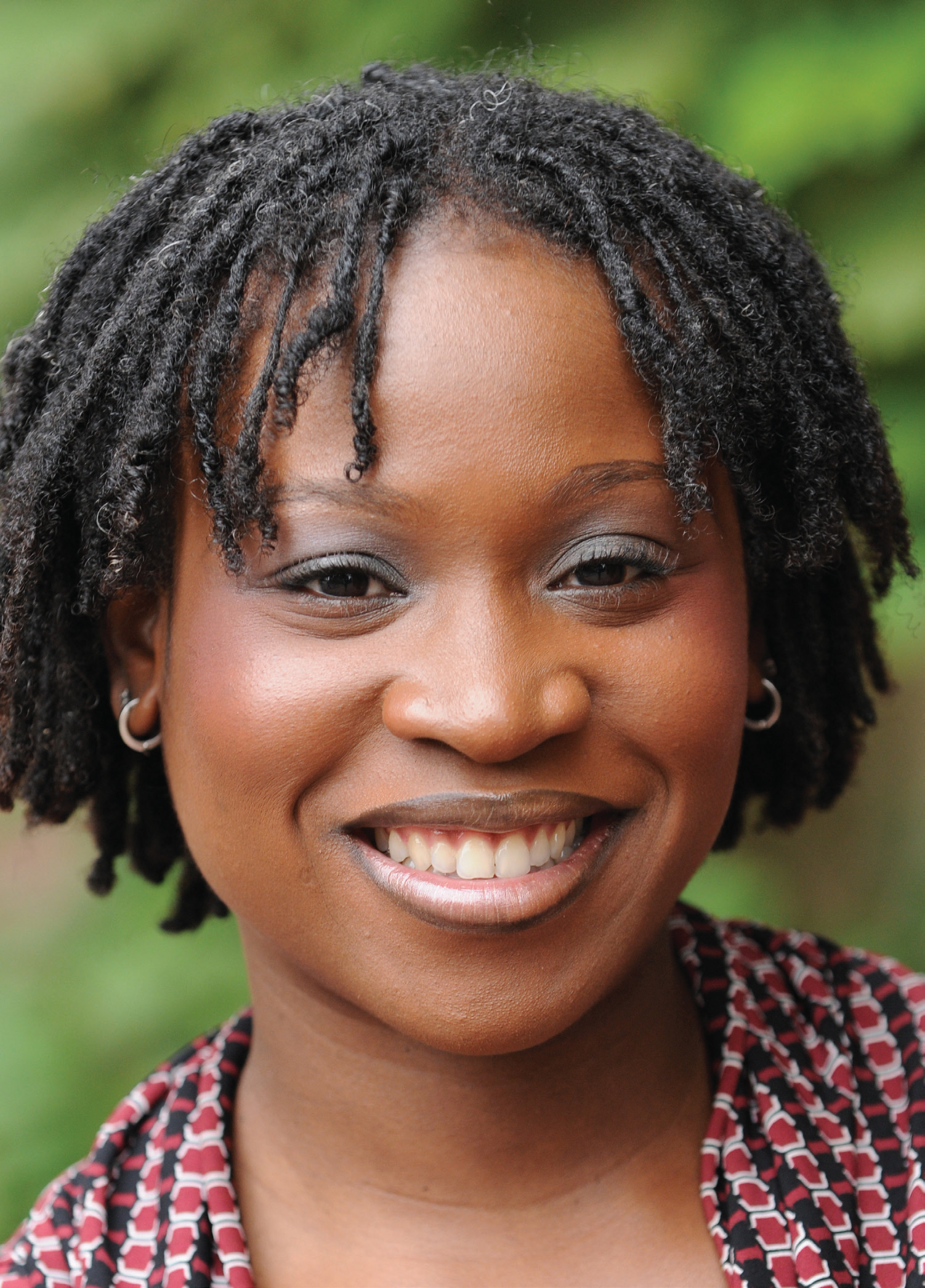How can we use available data about students to fine-tune our instruction and facilitate their learning? Thanks to the Learning Analytics Task Force and SLAM lecture series, this question is getting lots of attention on campus this year. Some especially innovative answers are provided by 2012 TIP winners Tim McKay, David Gerdes, and August Evrard (pictured below, left to right), whose "Better-Than-Expected" (BTE) project used analysis of large data sets to support student learning in introductory physics courses.


 The three Arthur F. Thurnau professors analyzed data from 48,579 U-M intro physics students over 14 years to generate models for predicting student success in these gateway courses. Correlating data concerning students' preparation (e.g., standardized test scores, prior U-M GPA, previous coursework, etc.), background (gender, socioeconomic status, etc.), and progress through the courses (homework grades, exam scores, class participation, etc.), the BTE team discovered that prior academic performance was a significant indicator of success in the introductory courses. In effect, students' progress through the semester was largely determined by their starting point. The team realized that, in order to develop the learning potential of all students, they needed to move away from a "one-size-fits-all" instructional model.
The three Arthur F. Thurnau professors analyzed data from 48,579 U-M intro physics students over 14 years to generate models for predicting student success in these gateway courses. Correlating data concerning students' preparation (e.g., standardized test scores, prior U-M GPA, previous coursework, etc.), background (gender, socioeconomic status, etc.), and progress through the courses (homework grades, exam scores, class participation, etc.), the BTE team discovered that prior academic performance was a significant indicator of success in the introductory courses. In effect, students' progress through the semester was largely determined by their starting point. The team realized that, in order to develop the learning potential of all students, they needed to move away from a "one-size-fits-all" instructional model.
Enter E2Coach. With support from the Gates Foundation, the group built an Electronic Expert Coaching system which they launched across all intro physics courses in January 2012.
![]()



 What can you do to make sure your teaching philosophy is an asset in your application? CRLT has many resources to help you develop and refine your statement.
What can you do to make sure your teaching philosophy is an asset in your application? CRLT has many resources to help you develop and refine your statement. 

 The three Arthur F. Thurnau professors analyzed data from 48,579 U-M intro physics students over 14 years to generate models for predicting student success in these gateway courses. Correlating data concerning students' preparation (e.g., standardized test scores, prior U-M GPA, previous coursework, etc.), background (gender, socioeconomic status, etc.), and progress through the courses (homework grades, exam scores, class participation, etc.), the BTE team discovered that prior academic performance was a significant indicator of success in the introductory courses. In effect, students' progress through the semester was largely determined by their starting point. The team realized that, in order to develop the learning potential of all students, they needed to move away from a "one-size-fits-all" instructional model.
The three Arthur F. Thurnau professors analyzed data from 48,579 U-M intro physics students over 14 years to generate models for predicting student success in these gateway courses. Correlating data concerning students' preparation (e.g., standardized test scores, prior U-M GPA, previous coursework, etc.), background (gender, socioeconomic status, etc.), and progress through the courses (homework grades, exam scores, class participation, etc.), the BTE team discovered that prior academic performance was a significant indicator of success in the introductory courses. In effect, students' progress through the semester was largely determined by their starting point. The team realized that, in order to develop the learning potential of all students, they needed to move away from a "one-size-fits-all" instructional model. Today's AnnArbor.com features a story about U-M faculty who are providing feedback on student writing via video. Using a technique called screencasting, instructors create a personalized video for each student paper. Free software records whatever is on the instructor's computer screen, along with their verbal comments, so instructors can open a student's paper, talk though its strengths, make suggestions for improvement, even pull up further resources on their computer screen, and then send the video directly to the student.
Today's AnnArbor.com features a story about U-M faculty who are providing feedback on student writing via video. Using a technique called screencasting, instructors create a personalized video for each student paper. Free software records whatever is on the instructor's computer screen, along with their verbal comments, so instructors can open a student's paper, talk though its strengths, make suggestions for improvement, even pull up further resources on their computer screen, and then send the video directly to the student. These key questions -- familiar to many instructors in large lecture courses -- structured Joanna Mirecki Millunchick’s teaching innovation in MSE (Materials and Science Engineering) 220. Because the course draws engineering majors with widely varying degrees of experience with course concepts, Professor Millunchick was especially interested in offering diverse students opportunities to review lecture topics and learn at a pace appropriate to their needs.
These key questions -- familiar to many instructors in large lecture courses -- structured Joanna Mirecki Millunchick’s teaching innovation in MSE (Materials and Science Engineering) 220. Because the course draws engineering majors with widely varying degrees of experience with course concepts, Professor Millunchick was especially interested in offering diverse students opportunities to review lecture topics and learn at a pace appropriate to their needs.  Along with her team of GSIs, the Arthur F. Thurnau Professor of English Language and Literature set the goal of improving students' skills at literary analysis, and then they focused their teaching efforts on replicating the advantages of a small course in a large lecture setting. The group creatively deployed technologies like iClickers and CTools online quizzes to ensure students completed readings and engaged actively with lectures. And they created assignment sequences that allowed students intensive writing practice and provided individualized feedback (without significantly increasing anyone's grading load). This combination of strategies resulted in significantly improved student skill with the complex task of close reading.
Along with her team of GSIs, the Arthur F. Thurnau Professor of English Language and Literature set the goal of improving students' skills at literary analysis, and then they focused their teaching efforts on replicating the advantages of a small course in a large lecture setting. The group creatively deployed technologies like iClickers and CTools online quizzes to ensure students completed readings and engaged actively with lectures. And they created assignment sequences that allowed students intensive writing practice and provided individualized feedback (without significantly increasing anyone's grading load). This combination of strategies resulted in significantly improved student skill with the complex task of close reading. 



